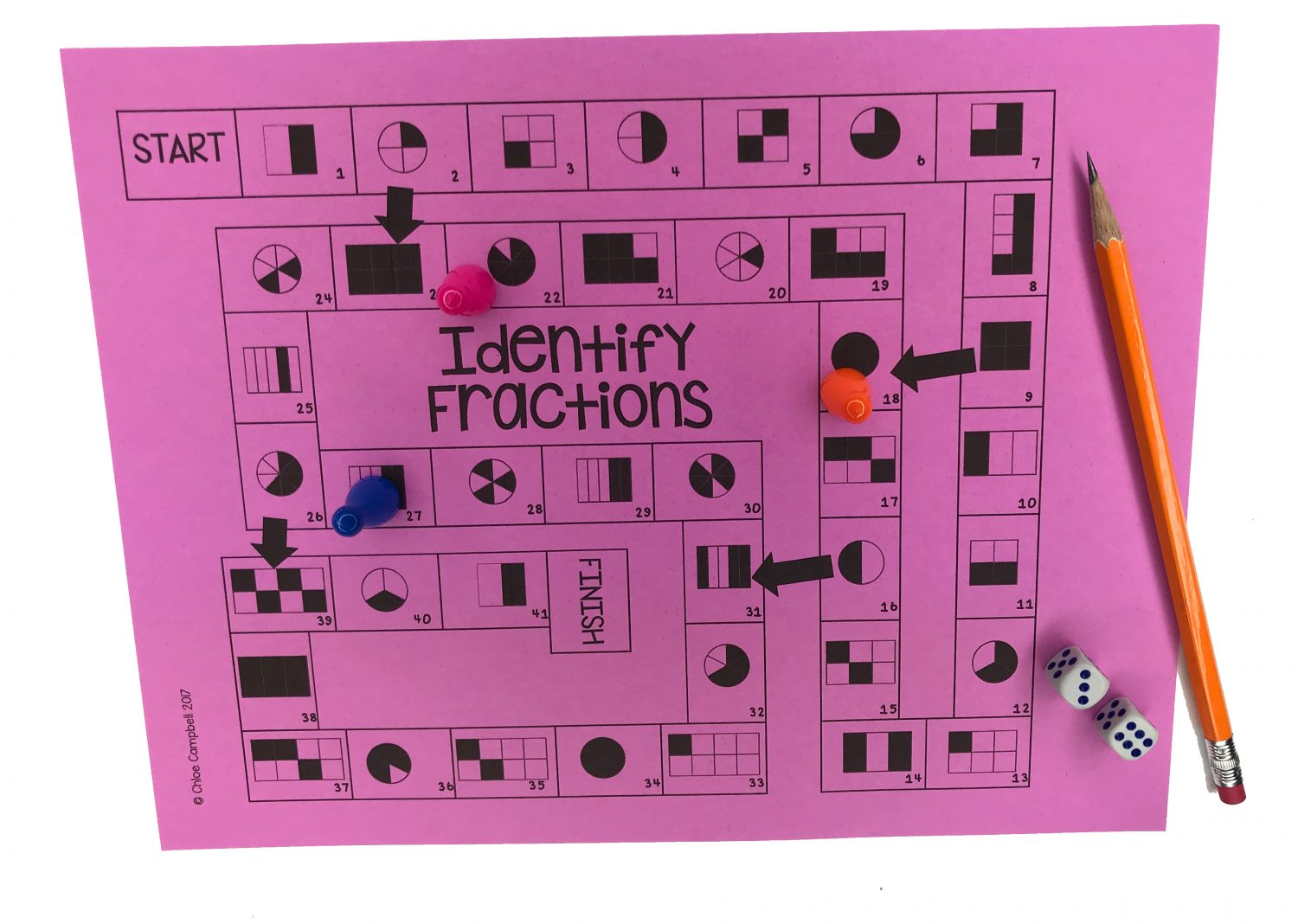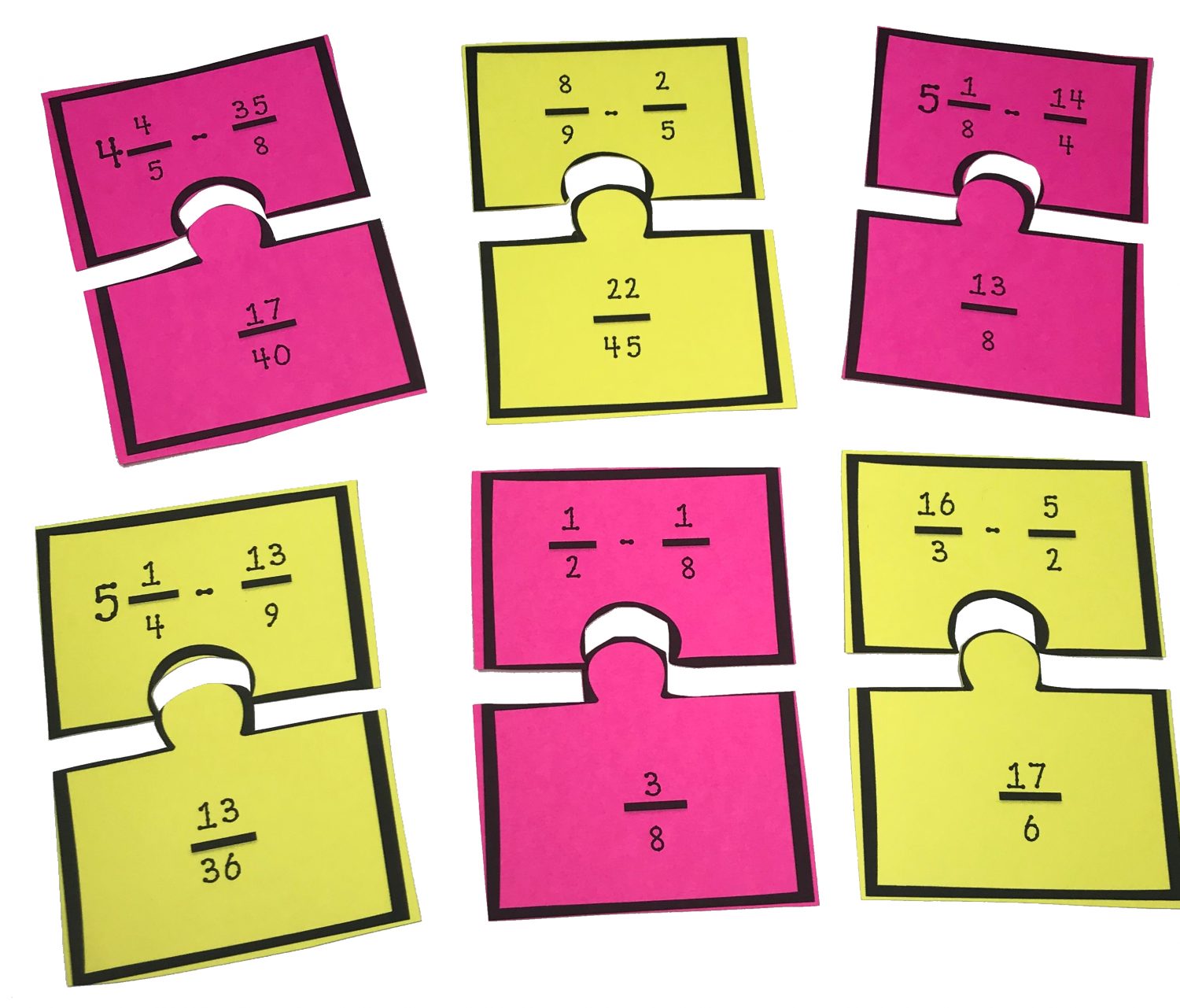Fractions can be one of the more difficult math concepts for students to understand. However, with a little practice and some fun activities, they can be on their way to mastering this important skill. In this post, I’ll share how to ensure your students have a solid understanding of fractions, strategies for teaching fractions, and ways you can help them practice and master basic fraction skills while having fun!

Assess your students’ knowledge
In order to ensure that your students have a solid foundation when it comes to fractions, you should first assess their understanding of the concept. The concept of fractions is introduced as early as first grade and students will continue to learn about fractions all the way through high school.
Even those students who excel at math may take a bit longer to fully understand the concept of fractions. This is why it’s important to assess their knowledge and ensure there is a solid foundation before teaching fractions in more advanced problems. If students don’t gain a solid understanding of fractions early, they could continue to struggle with the concept as they move to more advanced topics like equivalent fractions, mixed numbers, improper fractions, and multiplying and dividing fractions.
The key to helping your students build a strong foundation is ensuring they understand exactly what a fraction represents and how to relate the concept to real-life situations. Fractions are mathematical concepts that your students will see every day around them. The idea of cutting a whole object into parts is introduced in the first and second grades. By third grade, students are learning about the numerator and denominator of a fraction. However, if students don’t fully understand what those terms mean in relation to each other, it can be very difficult for them to progress in upper elementary math.
Some things that I like to assess are understanding what the parts of a fraction represent (numerator, denominator, and vinculum), where a fraction falls on a number line of whole numbers, and how to demonstrate a fraction either on paper or with an object.

Tips for Assessing Student’s Understanding
First, students must understand how to split an object or a group of objects into equal-sized parts. This relies heavily on their understanding of division and how you divide something into equal parts. You can simply assess this concept by giving students an object or group of objects and asking them to split them into equal pieces. One easy way to do this is to draw a shape and ask them to divide that into equal parts. For example, draw a square and have the kids divide it into four equal parts.
Another fun way to assess this skill is to have them draw circles to represent pizzas. Then have them “cut” that pizza into 4 or 8 equal pieces.
Students should realize that fractions can relate to parts of one whole object (such as the pizza mentioned above). They also should realize that fractions can present a portion of a larger group of items (such as gumballs in the gumball machine). This is why it’s important for students to know how to not only divide an object into equal parts but also divide a number of objects into equal groups.
First students should understand how to split something into equal parts. Then they need to learn what the parts of a fraction mean. This can be assessed by giving them an image and asking them to identify the fraction that represents the images. Using the pizza example from earlier is a great activity. Simply draw the pizza divided into slices but show that it is missing slices. Students need to identify the fraction that shows how many pieces of pieces were eaten (or how many pieces of pizza are left).
I like to use fun activities and games to assess my students when possible. This board game is one of my favorite fraction activities and is a great resource to use when beginning to introduce fraction concepts. You can use this game to quickly assess your students’ knowledge so you can better differentiate and adjust your lessons throughout the year.
Basic tips for teaching fractions
Once you’ve evaluated your students and have determined where they stand when it comes to fractions, you can do a review for the entire class or use these activities to give students who are still struggling some extra practice.

Helping your students understand a fraction and how it translates to a physical object is important for their progression to more advanced math concepts in middle and high school. Many students learn tricks to solve math problems that involve fractions. However, the students don’t fully understand the foundation of the problem. When students can relate fractions back to physical objects, they have a much better understanding of what the problem is asking and how to solve it.
Once students learn the parts of a fraction and what those numbers represent, they will have a much easier time manipulating fractions and solving problems. You can help them remember the parts of a fraction with these tips:
Numerator – starts with the letter “N” and is NORTH of the line in a fraction. This number represents what part of the whole we have.
Denominator – this number is “down” below the line in the fraction. This number represents what we are counting or how many parts we have split something into in total.
Vinculum – this is the line that “divides” the fraction into a numerator and denominator.
Provide plenty of practice, reinforcement & differentiation
As always, using manipulatives, math games, task cards, and hands-on activities are fantastic ways for your students to understand any math concept and have plenty of practice with those concepts. Students love using these types of resources in small groups and with partners and it’s a great way to give specific students additional practice on certain topics.
You can easily differentiate your instruction using these types of hands-on tools and activities also. By creating small groups, you can help students focus on the topic or area that they need the most support. You can also join in on the fraction fun by playing the games alongside your students. This will give you an opportunity to monitor and evaluate them in a more personal setting and offer one-on-one support if needed.

There are over 50 resources in my Teachers Pay Teachers store to support teaching fractions. Here are some of my favorite resources for teaching different fraction concepts:
Comparing & Equivalent Fractions
- Equivalent Fractions Game | 3rd, 4th, and 5th Grade Math Review
- Comparing Fractions Math Game | Like Denominators and Numerators
Adding/Subtracting Fractions
- Add and Subtract Fractions with Unlike Denominators Board Game
- Add and Subtract Mixed Numbers with Like Denominators Board Game | Math Stations
- Adding and Subtracting Fractions with Like & Unlike Denominators Games BUNDLE
Multiplying/Dividing Fractions
- Multiplying Fractions Game | 5th Grade Math Review
- Dividing Fractions Game | 5th and 6th Grade Math Review
Using Fractions in Real-World Applications
Do you have any favorite games or activities that you use in your classroom when teaching fractions? I’d love to hear what works best for your students. Share your tips and activities in the comments below!






Leave a Reply